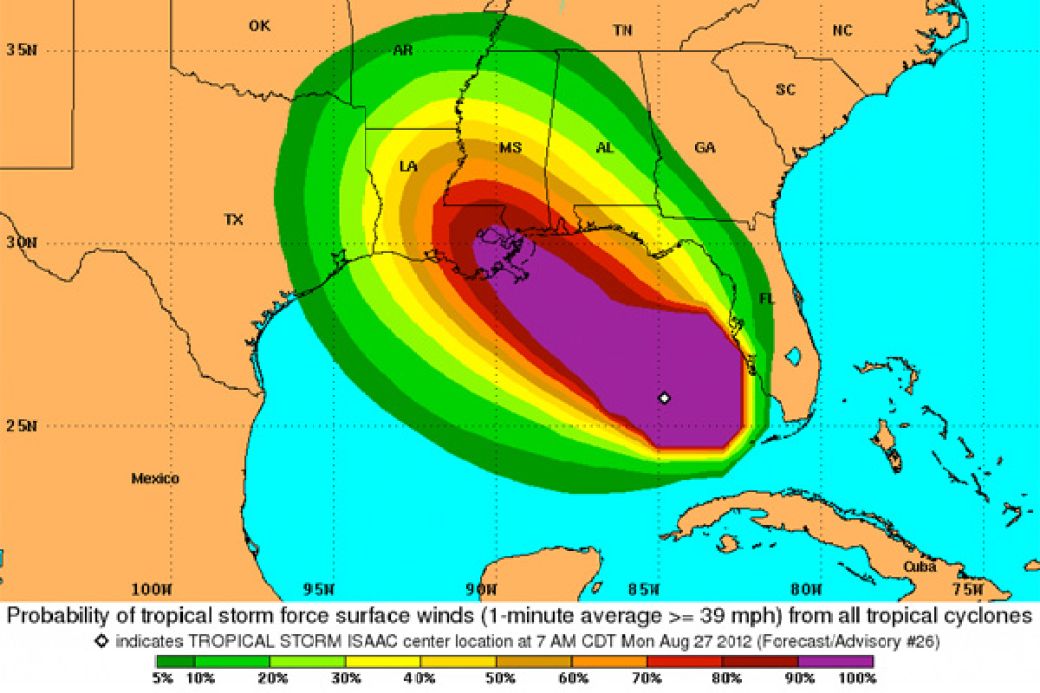When a hurricane approaches, everyone goes category crazy. Sandy (2012) was a Category 1 hurricane when it came ashore. Matthew (2016) was a Category 2 that caused deaths and extensive damage in the Carolinas. And Michael (2018) reached Category 5 when it smashed into the Florida Panhandle. Michael was the most recent Category 5 hurricane to hit the U.S.
Even though Category 1 has the lowest wind speeds per hour, it still packs a wallop. Hurricane Beryl made landfall near Matagorda, Texas, as a Category 1 hurricane in early July 2024. But even after it weakened to a tropical storm while moving across Texas, it caused significant damage. Nearly 3 million homes and businesses lost power in the Houston area, and at least three people lost their lives, according to Associated Press reports.
Here's a look at the various types of tropical weather events and the hurricane categories.
The Difference Between a Depression, a Tropical Storm and a Hurricane
The difference is the intensity based on sustained surface wind speeds calculated using U.S. one-minute averages. The National Hurricane Center describes these three weather events as tropical cyclones that have varied sustained surface wind speed.
- Tropical depression: The maximum sustained surface wind speed is 38 miles per hour or less.
- Tropical storm: The maximum sustained surface wind speed ranges from 39 miles per hour to 73 miles per hour.
- Hurricane: The maximum sustained surface wind speed is 74 miles per hour or more. The term "hurricane" is used for Northern Hemisphere tropical cyclones east of the International Dateline to the Greenwich Meridian.
What's the Difference Between Categories?
The National Hurricane Center has a helpful chart and animated graphic that show you how each category on the Saffir-Simpson Hurricane Wind Scale would affect your well-constructed home:
Category 1 (74 MPH to 95 MPH Winds)
Category 1 is a whopper of a storm. You may have roof and siding damage. Large branches will break from older trees, and power outages will last for a few or several days.
Tips: Make sure your home emergency preparedness kit is up to date, gas up your portable generator, and be ready to treat sick and storm-damaged trees.
Category 2 (96 MPH to 110 MPH Winds)
In addition to roof and siding damage, downed trees will likely block roads. Power outages will last from several days to weeks.
Tip: If a neighbor’s tree falls over your property line, do nothing until you call your insurance company. They'll restore your property and then decide if you or your neighbor was at fault.
Category 3 (111 MPH to 129 MPH Winds)
This devastating storm could cause major damage or destruction. That could require repairing or replacing your roof, siding, and gutters. Forget about power for a couple of weeks. Plus, you may either lose your county water supply or have to treat water before you drink it.
Tip: Fill bathtubs before the storm and use that that water to bathe and flush toilets.
Category 4 (130 MPH to 156 MPH Winds)
You’ll probably be evacuated if a Category 4 hits your region. That means you won’t have to watch the major structural damage your house will probably sustain.
Tip: This is the time to rely on the kindness of friends and family. They may have a granny flat or in-law suite where you can stay while you assess and rebuild.
Category 5 (157 MPH or Higher Winds)
This is a catastrophe that could reduce even well-constructed homes to timber.
Tip: This is why it’s essential to create a home inventory, so when you file an insurance claim, you know what you’ve lost. Before the storm hits, use your smartphone to video the contents of your home room by room.
Think you can ride out a hurricane? Check out this photo gallery of historic hurricanes, and you might change your mind.
